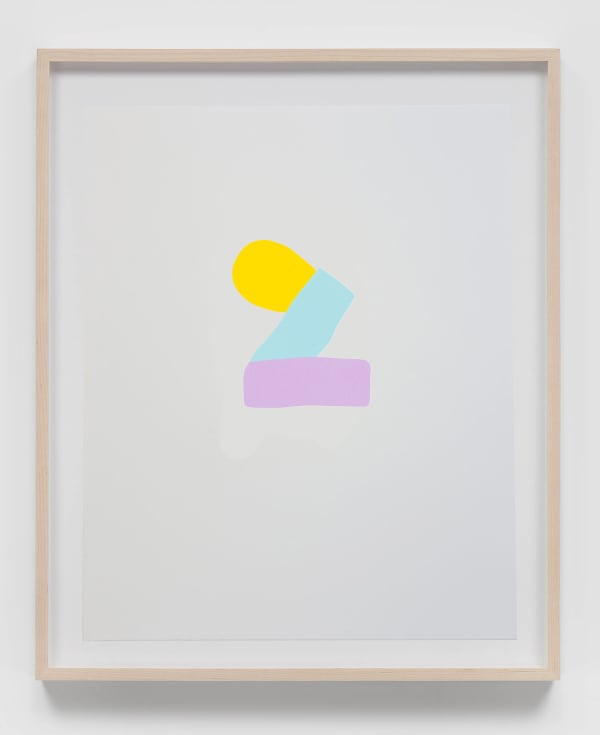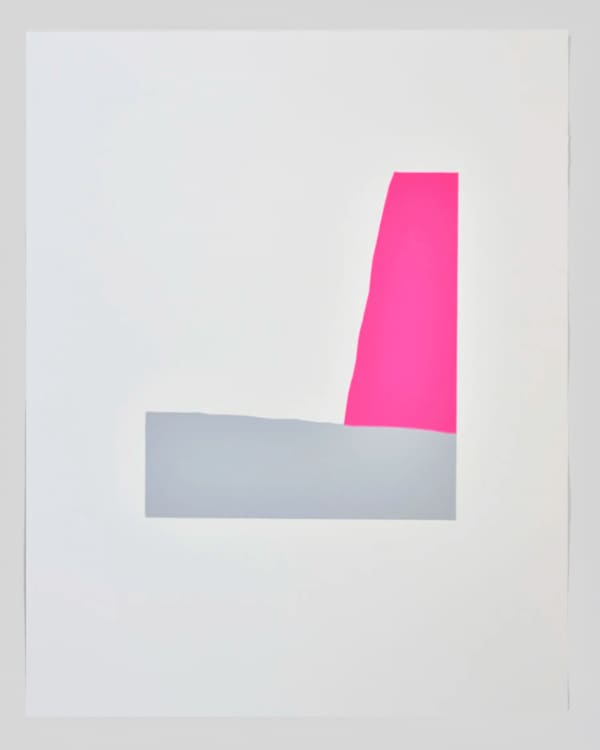-
Federico Herrero sees paintings everywhere, from street curbs and traffic signs to the painted trees and stones which proliferate in his native San José, Costa Rica. It is this examination of how color, shapes and signs define the urban environment that is vital to his practice as a painter.
Herrero is best known for working on an operatic scale, regularly exhibiting immersive, site-specific wall paintings, monumental canvases, and cast concrete sculptures. In striking contrast, these intimately scaled canvases and monotypes create a rich, distilled vocabulary that explores the sensory and pictorial properties of Herrero’s painting and image making.
-
-
“The bold flamboyance and delicate luminosity of Federico Herrero’s paintings are about both the process and the pleasure of seeing. His artistic language is grounded not in theory but rather in the immanence of the medium, in the basic act of painting contained in the application of coloured pigment over surfaces. The internal logic of Herrero’s work is governed by formal decisions that are never autonomous but that filter moments and glimpses of his immediate environment. In this way his paintings speak both of the world and of themselves.”¹
-

-

-
Available Monotypes
-
-
 FEDERICO HERRERO, Untitled, 2020
FEDERICO HERRERO, Untitled, 2020 -
 FEDERICO HERRERO, Untitled, 2019
FEDERICO HERRERO, Untitled, 2019 -
 FEDERICO HERRERO, Untitled, 2020
FEDERICO HERRERO, Untitled, 2020 -
 FEDERICO HERRERO, Untitled, 2020
FEDERICO HERRERO, Untitled, 2020
-
 FEDERICO HERRERO, Untitled, 2020
FEDERICO HERRERO, Untitled, 2020 -
 FEDERICO HERRERO, Untitled, 2020
FEDERICO HERRERO, Untitled, 2020 -
 FEDERICO HERRERO, Untitled, 2020
FEDERICO HERRERO, Untitled, 2020 -
 FEDERICO HERRERO, Untitled, 2020
FEDERICO HERRERO, Untitled, 2020
-
-

-
Federico Herrero (b. 1978, San José, Costa Rica) has presented solo exhibitions and public installations in São Paulo; San Francisco; Dusseldorf, Germany; Kanazawa, Japan; Tokyo; Mexico City; and London. Recent major institutional projects include Tempo aberto, Museu de Arte Contemporânea de Niterói, São Paulo (2019); Open Envelope, Witte de With, Rotterdam, the Netherlands (2018); and Alphabet, a site-specific installation for the atrium of the Museum of Contemporary Art Chicago (2018). This summer, he will be the subject of an important mid-career retrospective at the Museo Nacional de Costa Rica in his native San Jose. Herrero received the Young Artist’s Prize at the 49th Venice Biennale (2001) and his work is in the permanent collection of numerous institutions including the Tate Modern, London, UK; Museo Nacional Centro de Arte Reina Sofía, Madrid, Spain; Philadelphia Museum of Art, Philadelphia, PA; Palm Springs Museum of Art, Palm Springs, CA; MUDAM, Luxembourg; MUSAC, Castilla y León, Spain; Museo de de Arte Moderno y Contemporáneo de Santander y Cantabria, Santander, Spain; MUAC Museo Universitario de Arte Contemporáneo, Mexico City, Mexico; Hara Museum of Contemporary Art, Tokyo, Japan; 21st Century Museum of Contemporary Art, Kanazawa, Japan; and the Guggenheim Museum, New York, NY. Herrero is also the founder of Despacio, a contemporary art space in his native San José, which is an important force in the continued development of Central America’s artistic voice. He lives and works in San José, Costa Rica.
-
¹Lunn, Felicity, “Spatial Landscapes.” In Federico Herrero (Freiburg im Breisgau: Kunstverein Freiburg, 2008).
Federico Herrero: Online Viewing Room
Past viewing_room






















